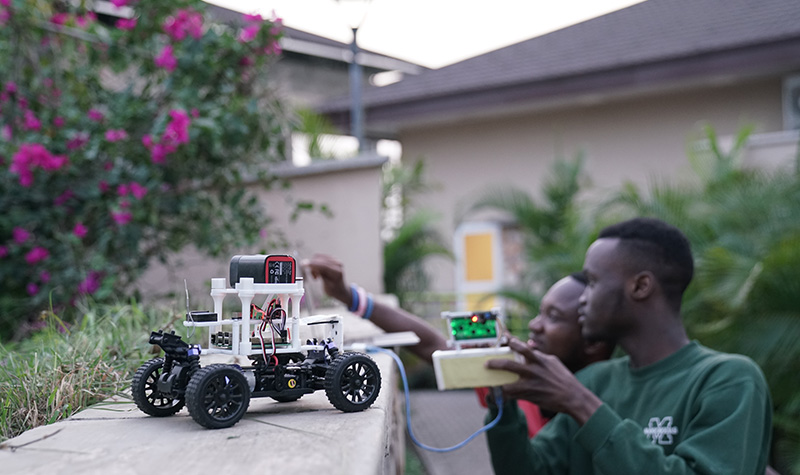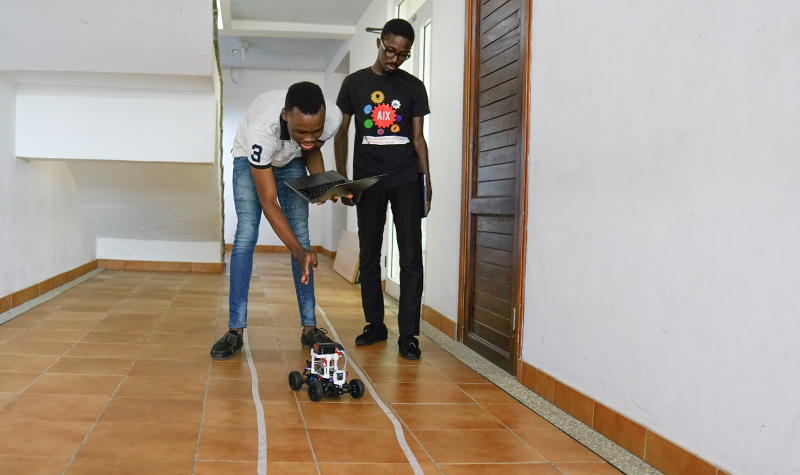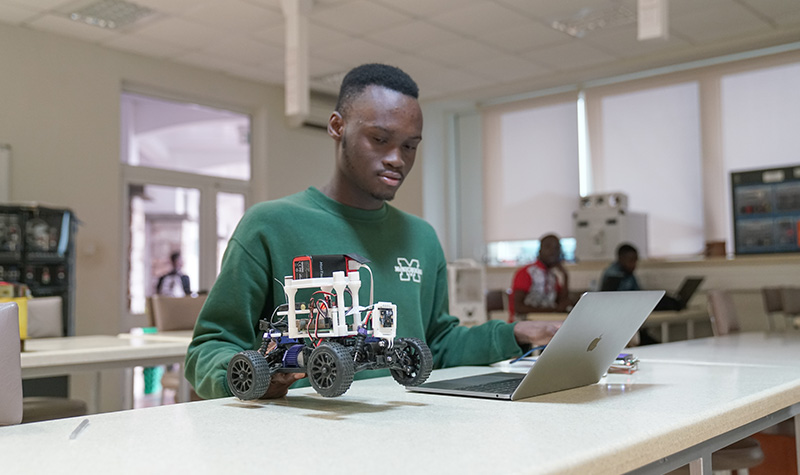 April 23, 2018
April 23, 2018
Since 2004, self-driving car technology has gone from wildly experimental to evidently possible. Google, Uber, Lyft and other leading tech and automotive companies are in the race to produce the safest and most reliable self-driving cars. While the technology is undeniably the next step in the world of commercial and private mobility, capturing the attention of engineers and technologists the world over, the biggest roadblock to autonomous driving research and development is the barrier of entry. For small startups and individual researchers and engineers in the developing world, access to self-driverless platforms will remain an aspiration due to high costs. For Benedict Quartey ’18, addressing this gap is the goal of his capstone project.

“My project seeks to build a low-cost modular autonomous vehicle development platform, aimed at providing students and researchers with a low-cost autonomous vehicle to develop self-driving technology,” he explained.
Not only are self-driving cars earmarked to revolutionize the car industry, but research also shows that the technology is expected to save close to 600,000 lives by 2045. For the developing world, where deaths by car accidents are especially high, this technology is long overdue.
“In 2015 alone an estimated 246,719 people died in Africa due to road accidents,” he explains. “The Ebola epidemic which in 10 months took 11,315 lives would have had to maintain its ferocity for a straight 18 years to even come close to the road fatalities of 2015. This is quite serious and deserves some attention. 1.25 million people die every year from road accidents, even though low to middle-income countries only contain about 54% of the world’s vehicles, these countries somehow contribute to 90% of all road accident fatalities—with Africa having the highest death rates.”

For his project, Benedict designed and developed a driverless platform, complete with a model car, allowing technicians, researchers, and developers to become part of the ecosystem without dealing with high costs. With a combination of procuring low-cost parts for a model car, and 3-D printing some parts, in addition to the platform, he’s taken a huge step in extending this reach to the developing world, allowing for research and development to be possible for our context, by our own people.
“I developed modular hardware and software infrastructure—complete with data collection pipelines —designed to allow African students and researchers test their ideas and implement self-driving algorithms, using similar machine learning and control techniques used in the industry,” he explains.

As research in the industry progresses, it’s imperative that the African market and rest of the developing world follow suit. For Benedict, this project is just the start.
Share this story
